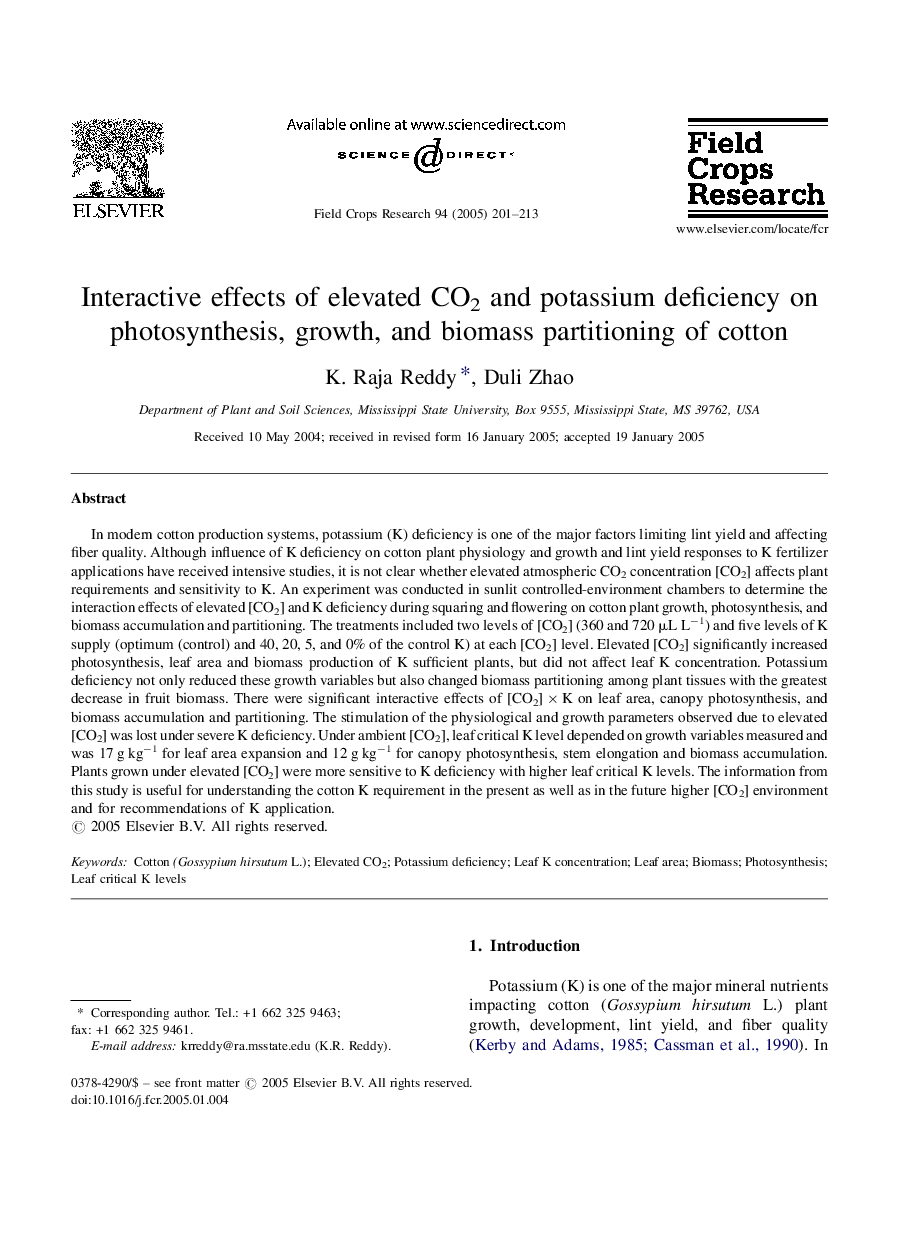| Article ID | Journal | Published Year | Pages | File Type |
|---|---|---|---|---|
| 9473510 | Field Crops Research | 2005 | 13 Pages |
Abstract
In modern cotton production systems, potassium (K) deficiency is one of the major factors limiting lint yield and affecting fiber quality. Although influence of K deficiency on cotton plant physiology and growth and lint yield responses to K fertilizer applications have received intensive studies, it is not clear whether elevated atmospheric CO2 concentration [CO2] affects plant requirements and sensitivity to K. An experiment was conducted in sunlit controlled-environment chambers to determine the interaction effects of elevated [CO2] and K deficiency during squaring and flowering on cotton plant growth, photosynthesis, and biomass accumulation and partitioning. The treatments included two levels of [CO2] (360 and 720 μL Lâ1) and five levels of K supply (optimum (control) and 40, 20, 5, and 0% of the control K) at each [CO2] level. Elevated [CO2] significantly increased photosynthesis, leaf area and biomass production of K sufficient plants, but did not affect leaf K concentration. Potassium deficiency not only reduced these growth variables but also changed biomass partitioning among plant tissues with the greatest decrease in fruit biomass. There were significant interactive effects of [CO2] Ã K on leaf area, canopy photosynthesis, and biomass accumulation and partitioning. The stimulation of the physiological and growth parameters observed due to elevated [CO2] was lost under severe K deficiency. Under ambient [CO2], leaf critical K level depended on growth variables measured and was 17 g kgâ1 for leaf area expansion and 12 g kgâ1 for canopy photosynthesis, stem elongation and biomass accumulation. Plants grown under elevated [CO2] were more sensitive to K deficiency with higher leaf critical K levels. The information from this study is useful for understanding the cotton K requirement in the present as well as in the future higher [CO2] environment and for recommendations of K application.
Keywords
Related Topics
Life Sciences
Agricultural and Biological Sciences
Agronomy and Crop Science
Authors
K. Raja Reddy, Duli Zhao,
